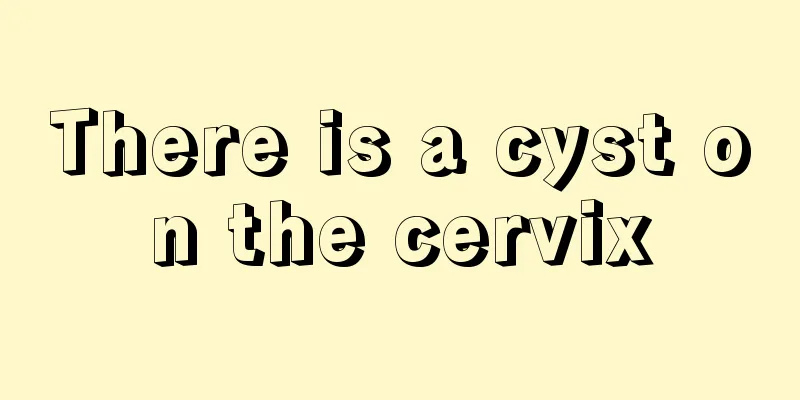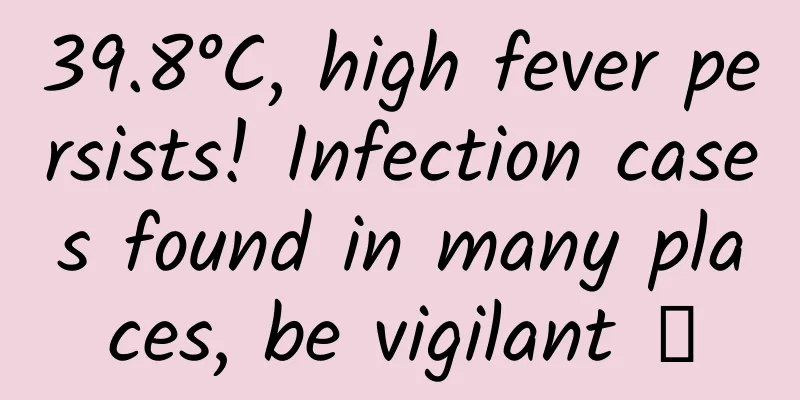There is a cyst on the cervix

|
Cervical cysts are common in gynecology. They look like small vesicles with yellow or reddish-brown color, protruding on the surface of the cervix, and contain colorless jelly-like substance inside. Cervical cysts are very likely to occur during the recovery process of cervicitis. The squamous epithelial cells of the newborn block the cervical gland duct, which prevents secretions from being discharged and causes cysts. Cervical cyst is a typical storage cyst. Below is an introduction to what a cervical cyst actually looks like. 1. Cervical cysts are light yellow or reddish brown, prominent on the surface of the cervix, with crystalline jelly-like substances inside. If infected, the cysts may become light yellow or milky white, and the fluid inside begins to become more turbid and even pus-like. Most of the cervical cysts are scattered on the surface of the cervix. The cysts can appear very large or small. The larger ones can even protrude to the vulva and directly connect with the root of the vulva. Cervical cysts can be combined with cervical hypertrophy. 2. When patients with cervical cysts go to the hospital for a physical examination, they will find one or more yellow cysts with thick fluid inside, the size of which is like millet or soybean. This disease is a type of chronic cervical inflammation, which often has no obvious symptoms. Along with the development of cervicitis, more leucorrhea will appear. Because the actual pathogens are different, the color of leucorrhea and the amount of secretions are very different. The secretions may be thick or may be leucorrhea. In rare cases, the secretions may be mixed with blood. In very rare cases, it may cause lumbosacral pain, irregular bleeding, menstrual pain, etc. The above is a detailed introduction to what cervical cysts actually look like. It is recommended that patients with cervical cysts go to the hospital for a physical examination. The main method for examining the disease includes acid-fast staining of secretions, which can find the actual infectious pathogens. Cervical TCT examination, also known as cervical cytology examination, can be used to determine whether there is a lesion. Vaginal speculum examination can directly observe the color, size, number and other conditions of the cyst. |
<<: What to do if there is a cyst on the cervix
>>: Can I have sex with a cervical gland cyst?
Recommend
What to do if a girl has chest pain
In life, the reasons for chest pain in women can ...
What is the drug of choice for a manic episode? What are the side effects?
Author: Sun Yi, Chief Physician, Beijing Huilongg...
What causes vaginal itching due to increased leucorrhea?
Some women have a lot of embarrassing things in t...
What causes bloating during menstruation?
Abdominal distension and pain during menstruation...
Is brown discharge normal during ovulation?
Generally speaking, healthy and normal women will...
How long does the stomach ache last after taking the abortion pill?
Many women choose to have a miscarriage by medica...
Female genital hair removal methods
With the rapid development of life nowadays, many...
Can stretch marks be suppressed after they have just appeared?
Many female friends will be troubled by stretch m...
Can I watch TV and play with my phone during confinement?
I often hear people say that you can’t do this or...
After staying up late for three days, the 28-year-old man felt so painful that he wanted to bang his head against the wall! Be careful of this virus, once infected, you will carry it for life!
It’s clearly time to go to bed, but I don’t want ...
A woman dreamed that she had lost 4 teeth.
It is ridiculous that a woman will die if she dre...
Are emergency contraceptive pills effective if taken within 72 hours?
When couples have sex, they are sometimes too exc...
How long can you get pregnant if your period is delayed?
We know that girls will stop menstruating after t...
Why is gray hair a warning from the body? It is not a good thing if your hair suddenly turns black
People with black hair will not understand the pa...
What are the benefits of eating bird's nest for pregnant women?
Women should pay attention to their diet when the...









